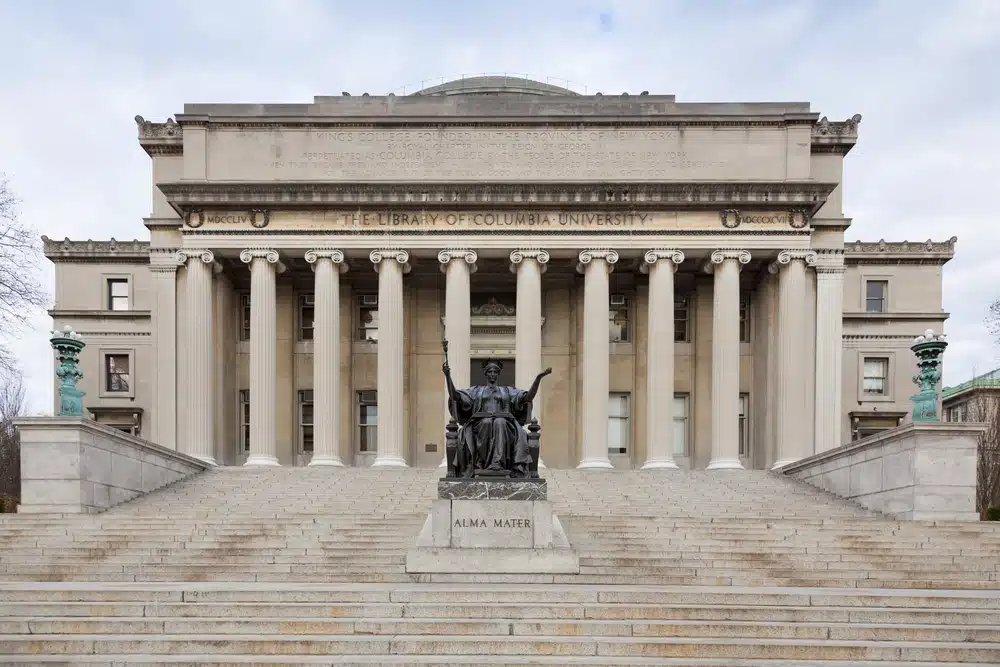Exploring Columbia University’s Diversity Statistics
Addressing diversity has become essential to any institution’s mission, including universities. This article focuses on Columbia University, one of the world’s leading higher education institutions, and how it fares in terms of diversity statistics. It is intended to enlighten prospective students, faculty, staff, and other stakeholders who have a vested interest in the University’s commitment to fostering a diverse, inclusive community.
Understanding Diversity: A Broad Perspective
Before delving into Columbia University’s diversity statistics, it’s crucial to discuss the concept of diversity itself, especially within higher education. This broad perspective will help us understand and interpret the data discussed further in the article.
Diversity in higher education goes beyond mere numbers and statistics. It encompasses a rich tapestry of experiences, backgrounds, and perspectives that contribute to the vibrant fabric of a university community. When we talk about diversity, we are not just referring to the visible aspects such as race, ethnicity, gender, and national origins, but also the invisible dimensions like thoughts, ideas, perspectives, and values.
Defining Diversity in Higher Education
Diversity in higher education typically refers to representing various groups within a college or university’s student body, faculty, and staff. It is a recognition that society comprises individuals with different backgrounds, experiences, and identities. By embracing diversity, universities create an environment that celebrates and values these differences, fostering a sense of belonging for all community members.
Moreover, diversity in thoughts, ideas, perspectives, and values is equally important and should not be undermined. These aspects may not be quantifiable in raw data but significantly contribute to an enriched academic and social environment. When individuals from diverse backgrounds come together, they bring unique insights and experiences that challenge conventional wisdom, stimulate intellectual growth, and broaden the horizons of everyone involved.

Importance of Diversity Statistics in Universities
Diverse campuses promote an inclusive culture where everyone’s experiences and ideas are valued without preconceptions or biases. This environment fosters intellectual curiosity, critical thinking, and open-mindedness, resulting in a better learning experience.
Furthermore, interaction with diverse peers better prepares students to work in an increasingly globalized world after graduation. It helps them gain cross-cultural understanding, respect for differences, and the ability to work effectively with people from different backgrounds. In a society that is becoming more interconnected and interdependent, these skills are invaluable in building bridges across cultures and promoting collaboration on a global scale.
Universities have a responsibility to cultivate diversity not only for the benefit of their students but also for the betterment of society. By embracing diversity, universities become catalysts for positive social change, breaking down barriers, and challenging systemic inequalities. They become places where individuals can grow, learn, and thrive, regardless of background or circumstances.
In conclusion, diversity is not just a buzzword or a box to be checked. It is a fundamental principle that lies at the heart of higher education. It is a commitment to creating an inclusive and equitable environment where all individuals have equal opportunities to succeed and contribute. By understanding and embracing diversity statistics in all dimensions, universities like Columbia can fulfill their mission of educating and empowering the next generation of leaders.
Columbia University: A Brief Overview
To understand the significance of the diversity stats, a quick overview of Columbia University will provide a much-needed context.
History and Reputation
Founded in 1754 as King’s College, Columbia University is credited as New York’s oldest institution of higher learning. It boasts a rich history and has significantly contributed to various fields over the centuries.
Throughout its existence, Columbia has always valued academic excellence and intellectual freedom. It has been a breeding ground for great thinkers, scholars, and innovators who have shaped the world in countless ways. From its early days as a small college to its current status as a renowned Ivy League university, Columbia has consistently upheld its commitment to providing a top-notch education.
Over time, Columbia University has played a significant part in fostering a diverse student body and faculty. It believes diversity is essential for creating a vibrant and inclusive academic community. The university actively seeks to attract students and faculty from different backgrounds, cultures, and perspectives, recognizing that this diversity enhances the educational experience for everyone.
Academic and Social Environment
Columbia University offers a dynamic academic and social environment. Students and teachers are encouraged to cross academic borders, challenge convictions, and engage in congeniality with their studies.
The university’s curriculum is designed to provide students with a well-rounded education. It emphasizes critical thinking, problem-solving, and interdisciplinary approaches to learning. Students can explore various subjects and tailor their education to their interests and career goals.
University life at Columbia is not just confined to academics; it also encompasses various extra-curricular activities, clubs, and societies catering to many interests. Whether students are passionate about sports, arts, community service, or political activism, there is something for everyone to get involved in.
Moreover, the University in New York City is often described as a ‘melting pot’ of different cultures. This provides students an urban and culturally rich environment beyond the campus boundaries. The city becomes an extension of the classroom, offering countless internships, networking, and cultural immersion opportunities.
In the heart of Manhattan, Columbia students can access world-class museums, theaters, restaurants, and iconic landmarks. They can explore the city’s diverse neighborhoods, experiencing the vibrant tapestry of cultures that make up New York City.
In conclusion, Columbia University is not just a prestigious institution with a long history; it is a place that values diversity, fosters intellectual growth and offers a unique blend of academic and social experiences. It continues to shape future leaders’ minds and contribute to advancing knowledge in various fields.

Analyzing Columbia University’s Student Demographics
We now delve into the crux of the topic, a close examination of the diversity at Columbia University.
Columbia University is renowned for its commitment to fostering a diverse and inclusive community. The student body is a true reflection of the multicultural fabric of not just New York City but the United States as a whole.
Breakdown by Ethnicity
Regarding ethnicity, Columbia boasts a multi-ethnic student body. Students from various racial and ethnic backgrounds form a vibrant and dynamic community. The diversity statistics in Columbia are celebrated and actively nurtured through multiple initiatives and programs that promote cultural exchange and understanding.
At Columbia, students can engage with peers from different ethnic backgrounds, learning from their unique perspectives and experiences. This exposure to diverse cultures and traditions enriches the educational experience and prepares students to thrive in an increasingly globalized world.
Gender Distribution
Gender distribution at Columbia University is almost evenly split, fostering gender diversity statistics and inclusivity. The university recognizes the importance of empowering students of all genders and providing equal opportunities for success.
Through its commitment to gender equality, Columbia ensures that all students have access to resources, support, and mentorship necessary to excel academically and professionally. This commitment extends beyond the classroom, with the university actively promoting a campus culture that values and respects individuals of all gender identities.
International Students Statistics
International students form a significant portion of Columbia’s student body, further underscoring its diverse nature. These students come from all corners of the globe, bringing a wealth of cultural perspectives and experiences.
Studying alongside international peers allows Columbia students to broaden their horizons and develop a global mindset. The presence of international students adds a distinctive cultural richness to the University’s intellectual and social environment, fostering cross-cultural dialogue and understanding.
Columbia University recognizes international students’ unique challenges and provides comprehensive support services to ensure their successful integration into campus life. From orientation programs to cultural clubs and organizations, the university strives to create a welcoming and inclusive environment for students worldwide.
Faculty and Staff Diversity at Columbia University
Diversity is not just confined to the student body but is also essential among faculty and staff. A diverse staff and faculty unlock countless opportunities for students to interact with different perspectives, ideas, and cultures, further enhancing their learning experiences.
At Columbia University, the commitment to diversity extends beyond the student population. The university recognizes the importance of having a faculty and staff that reflects the rich tapestry of our world. By actively seeking out professors and experts from different ethnic backgrounds, Columbia University ensures that diverse voices influence its academic discourse.
Faculty Ethnicity Distribution
Columbia University has continued to make strides in hiring diverse faculty, with professors and experts of different ethnicities represented across various departments. This commitment aligns with Columbia’s ethos to value and respect differences and ensure diverse voices influence its academic discourse.
Within the faculty, there is a vibrant mosaic of ethnic backgrounds. Professors of African, Asian, Hispanic, and Middle Eastern descent contribute their unique perspectives to the academic community. This diversity enriches the educational experience for students and fosters a sense of inclusivity and understanding.
Furthermore, Columbia University actively supports initiatives promoting recruiting and retaining faculty members from underrepresented ethnic groups. The university ensures that diverse faculty members can thrive and contribute significantly to their respective fields by providing mentorship programs, professional development opportunities, and a supportive work environment.
Gender Ratio among Faculty and Staff
Columbia University is also keenly interested in maintaining gender parity in faculty and staff, encouraging equal opportunity for all. This helps ensure a balanced teaching and administrative environment, crucial for fostering a healthy learning culture on campus.
Within the faculty and staff, there is a strong emphasis on gender equality. Women hold key leadership positions across various departments, serving as role models for aspiring female academics. The university actively promotes a culture of inclusivity and gender equity, recognizing the importance of diverse perspectives in shaping the academic landscape.

Columbia University’s commitment to gender equality extends beyond recruitment efforts. The university provides resources and support for career advancement, professional development, and work-life balance, ensuring faculty and staff have equal opportunities to succeed and thrive.
Columbia University creates an environment where students can engage with various perspectives and experiences by prioritizing diversity and inclusivity among its faculty and staff. This commitment to diversity enhances the educational experience and prepares students to thrive in an increasingly interconnected and diverse world.
Diversity in Columbia University’s Programs and Majors
Diversity is not just about representation but also equal access to opportunities. Diversity in programs and majors is, therefore, a significant consideration.
Regarding diversity in programs and majors, Columbia University stands out as a shining example. The university offers a wide range of academic disciplines, ensuring that students from diverse backgrounds can choose from many options. Whether it’s the humanities, social sciences, natural sciences, or professional programs, Columbia University caters to its student body’s varied interests and aspirations.
Popular Majors among Diverse Student Groups
Columbia University’s diverse student cohort can choose from a wide range of majors. It has been observed that different groups represented across all majors rather than concentration in specific fields suggest that Columbia’s academic offerings appeal to a broad cross-section of its student body.
For instance, the humanities department at Columbia University attracts students from various ethnic and cultural backgrounds who are passionate about literature, philosophy, and history. On the other hand, the social sciences department sees a diverse mix of students interested in understanding the complexities of society, politics, and economics. In the natural sciences, students from different racial and ethnic backgrounds come together to explore the universe’s wonders and contribute to cutting-edge research.
Diversity in Graduate and Professional Programs
The same applies to the University’s graduate and professional programs. They attract a diverse student body from all over America and worldwide. This underpins Columbia’s commitment to providing a broad spectrum of educational experiences that take account of the world’s diversities and complexities.
Graduate programs at Columbia University offer a unique opportunity for students to delve deeper into their chosen fields of study. Whether it’s the renowned business school, the prestigious law school, or the esteemed medical school, diversity is a crucial aspect of the student body. Students from different cultural, racial, and socioeconomic backgrounds come together to learn from each other’s perspectives and enrich their educational journey.
Furthermore, Columbia University’s commitment to diversity extends beyond the classroom. The university promotes inclusivity through various initiatives, such as student organizations, cultural events, and diversity-focused workshops. These opportunities allow students to engage in meaningful discussions, celebrate their differences, and foster a sense of belonging.
In conclusion, Columbia University is a leading example of diversity in higher education. While there is always room for improvement, the efforts towards promoting inclusivity and enhancing diversity statistics in Columbia are promising and demonstrate a progressive approach towards higher education. With its diverse programs and majors, Columbia University continues to empower students from all walks of life to pursue their passions and contribute to a more inclusive and equitable society.

If you want to discuss the matter to a greater extent or inquire about college admissions, look no further! Our experts here at AdmissionSight can help you! Here at AdmissionSight, we have over a decade’s worth of experience guiding students through the competitive admissions process to get accepted to the top universities in the world. Feel free to set up an appointment today to book your initial consultation.



































